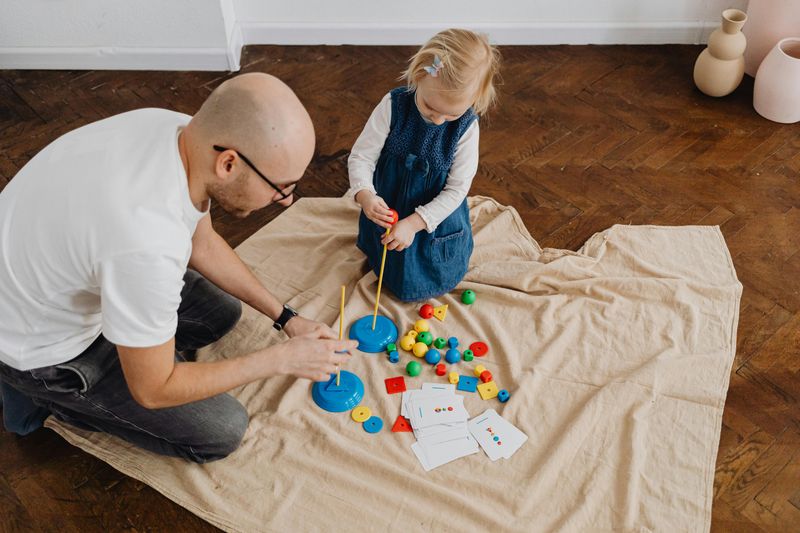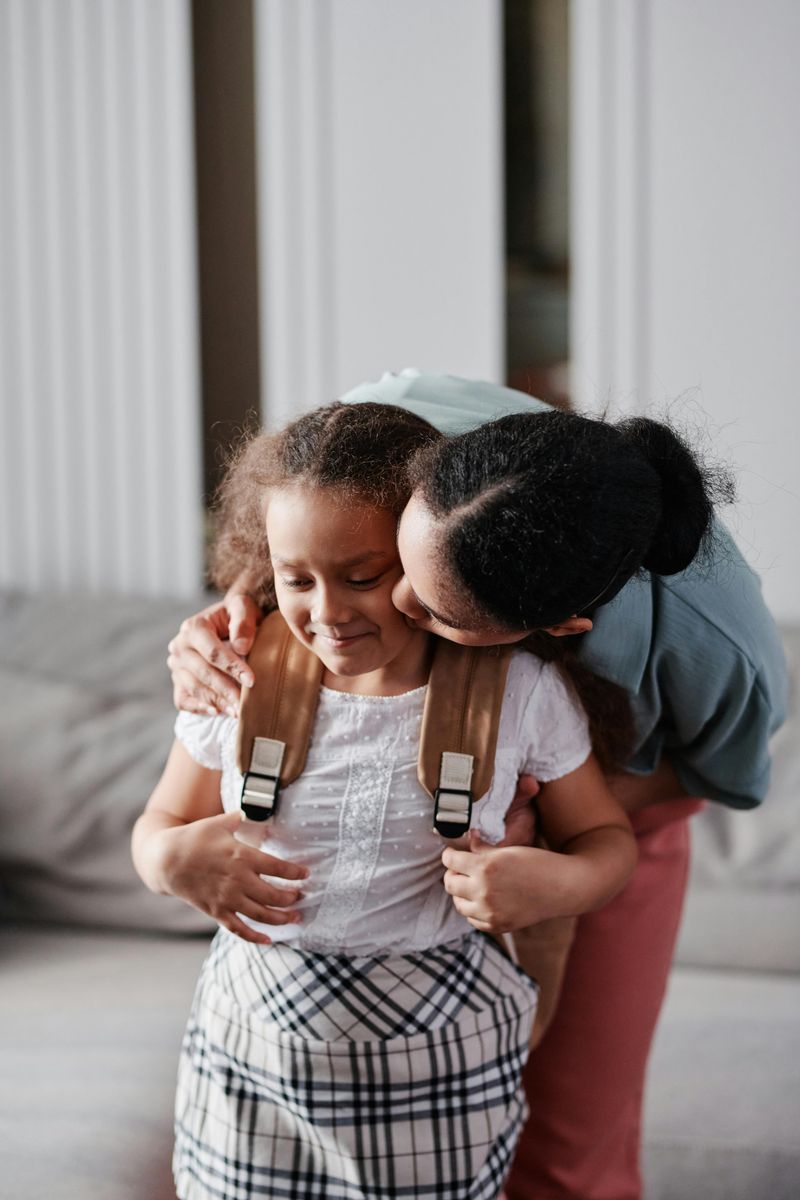Parenting comes with countless moments when we need our kids to listen and cooperate. The phrase “because I said so” might slip out when we’re tired or frustrated, but it rarely helps children understand or learn. Gentle parenting offers a different approach—one that respects children while still maintaining necessary boundaries. These alternative phrases build connection, teach reasoning skills, and help kids feel heard, even when the answer is still no.
1. I know this isn’t what you want, but here’s why we need to do it
Acknowledging your child’s feelings before explaining your reasoning shows them you understand their perspective. This validation helps their developing brain process disappointment while still learning important cause-and-effect thinking.
When children hear the reasoning behind rules and requests, they’re more likely to cooperate because they understand the purpose. This approach teaches critical thinking rather than blind obedience.
Try using this phrase when enforcing bedtime, limiting screen time, or requiring vegetables before dessert. The key is keeping explanations age-appropriate and genuine—kids can spot insincerity from miles away!
2. I hear that you’re upset. Let’s figure this out together
Partnership language transforms power struggles into collaborative problem-solving. Children who feel included in solutions develop ownership over their choices and actions, building lifelong decision-making skills.
This phrase works wonders during transitions, meltdowns, or when siblings clash over toys. The magic happens in the pause after acknowledging feelings—that moment creates space for emotions to settle before moving to solutions.
Remember to match your tone and body language to your words. Crouching down, speaking softly, and maintaining calm dramatically increases effectiveness, especially when your child is in the midst of big emotions.
3. I can see you really want to… but right now we need to…
Balancing empathy with boundaries creates emotional safety for children. They learn their desires matter even when they can’t always be fulfilled immediately—a crucial life lesson about delayed gratification.
The structure of this phrase teaches children to recognize competing priorities without dismissing either one. For example: “I can see you really want to finish your game, but right now we need to leave for school.”
Follow through by offering a concrete time when their desire might be fulfilled: “We can continue playing when we get home.” This builds trust that their wants aren’t forgotten, just temporarily postponed.
4. Would you like to do it now or in 5 minutes?
Offering limited choices gives children appropriate control while maintaining necessary boundaries. This simple technique transforms potential battles into opportunities for cooperation and decision-making practice.
The beauty lies in both options being acceptable to you—”brush teeth now or after one more book” both end with teeth getting brushed. Children who regularly exercise decision-making develop confidence and independence.
Keep timing realistic and use visual aids with younger children. A timer they can see removes the feeling that you’re arbitrarily ending their fun and makes the five-minute warning concrete rather than abstract.
5. This is hard, but I know you can handle it
Expressing confidence in your child’s capabilities builds resilience for life’s inevitable challenges. Children internalize the belief that difficult doesn’t mean impossible—an essential mindset for perseverance and growth.
Use this phrase when your child faces appropriate struggles: zipping their coat, solving a puzzle, or managing disappointment. The acknowledgment that something is genuinely difficult validates their experience without rushing to rescue them.
Follow with specific observations of past successes: “Remember when you couldn’t tie your shoes? You kept trying and now you do it every day!” This connects current challenges to evidence of their growing competence.
6. It looks like you’re frustrated. Can I help you?
Naming emotions helps children develop emotional intelligence—the ability to identify, understand and manage feelings. When we label what we observe, children gain vocabulary for their internal experiences.
Offering help as a question rather than jumping in preserves their autonomy. Sometimes children just need emotional support, not a solution—the question gives them space to decide what they need.
Watch closely for your child’s response. If they decline help, respect their independence while staying nearby: “I understand you want to try yourself. I’ll be right here if you change your mind.” This builds trust that you’ll respect both their struggles and their capabilities.
7. We need to leave now. Do you want to walk or skip to the car?
Transition moments often trigger power struggles. This phrase acknowledges the non-negotiable (leaving) while offering control over how it happens, making cooperation more likely and meltdowns less frequent.
The playful options inject fun into potentially tense situations. Children who might dig in their heels about leaving the playground suddenly become enthusiastic about hopping like a bunny to the car!
Expand this approach to other daily transitions: “Bath time now—do you want to bring the blue boat or the yellow duck?” or “Bedtime story—shall we read under the covers or in the rocking chair?” These small choices respect children’s need for autonomy within necessary routines.
8. I know you don’t like this, but my job is to keep you safe
Safety boundaries require firm limits, but explaining your parental responsibility helps children understand the loving intention behind the rules. This builds trust that restrictions come from care, not arbitrary control.
Children benefit from understanding that parents have specific responsibilities—keeping them healthy and safe ranks among the most important. This framing helps them see rules as protection rather than punishment.
Apply this phrase consistently with safety issues like car seats, helmets, holding hands in parking lots, or food allergies. The repetition helps children internalize which rules are flexible (ice cream flavors) and which are non-negotiable (running into traffic).
9. I get it—you’d rather keep playing. Let’s think of something fun to do after we finish this
Acknowledging preferences while offering future enjoyment helps children develop patience and follow-through. This approach teaches that responsibilities come before rewards—a valuable life skill that builds healthy habits.
The collaborative phrasing—”let’s think of something”—invites children into problem-solving rather than merely receiving a parental promise. This shared planning builds anticipation that makes the current task more bearable.
Make sure to follow through on the fun activity afterward. Consistency builds trust that your words have meaning, making future cooperation more likely when you need to interrupt play for responsibilities.
10. Let’s try it this way and see how it goes
Experimentation language encourages flexibility and resilience in children. When we frame situations as trials rather than permanent solutions, kids learn that adaptation is normal and expected in life.
This approach works beautifully for introducing new routines, foods, or skills. The low-pressure invitation—”let’s see how it goes”—reduces resistance because nothing feels permanent or forced.
Follow up with genuine evaluation: “How did that work for you?” This teaches children to assess experiences rather than simply rejecting them outright. Even if the first attempt doesn’t succeed, the process of trying and evaluating builds problem-solving skills that last a lifetime.
11. I understand you feel strongly about this. Here’s what we can do…
Validating intense feelings while offering constructive options helps children channel emotions productively. This phrase acknowledges their perspective without surrendering necessary boundaries.
The key lies in the transition from validation to solution. Pausing after acknowledging feelings gives children time to feel heard before moving toward resolution.
Offer realistic alternatives that respect both their desires and your requirements: “I understand you feel strongly about wearing shorts. Here’s what we can do: wear shorts with leggings underneath since it’s cold outside.” This balanced approach teaches compromise and creative problem-solving while maintaining your role as the guide.
12. I love you too much to let you [unsafe behavior]
Framing limits as expressions of love rather than control helps children understand the protective nature of boundaries. This phrase connects rules directly to your care for them, building security rather than resentment.
The specific naming of the behavior—not the child—preserves their sense of being good while clarifying which actions aren’t acceptable. “I love you too much to let you jump on the coffee table” targets the behavior while affirming the relationship.
This approach works especially well with impulsive children who need frequent reminders about safety. The consistent message that limits come from love helps them gradually internalize boundaries without feeling criticized or rejected.












![I love you too much to let you [unsafe behavior]](https://frumvintxhwwdlxdneim.supabase.co/storage/v1/object/public/article_images/8cbc8937-c6b0-4b0d-90df-c5ccab21bdbb/BIjvueZFpEC8u7S8.jpeg)